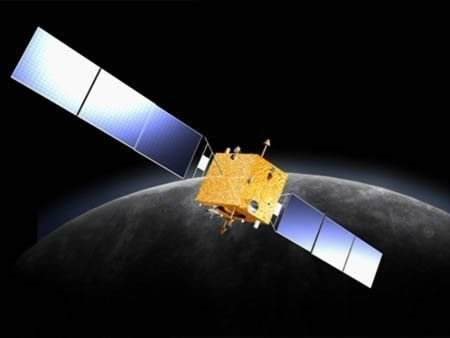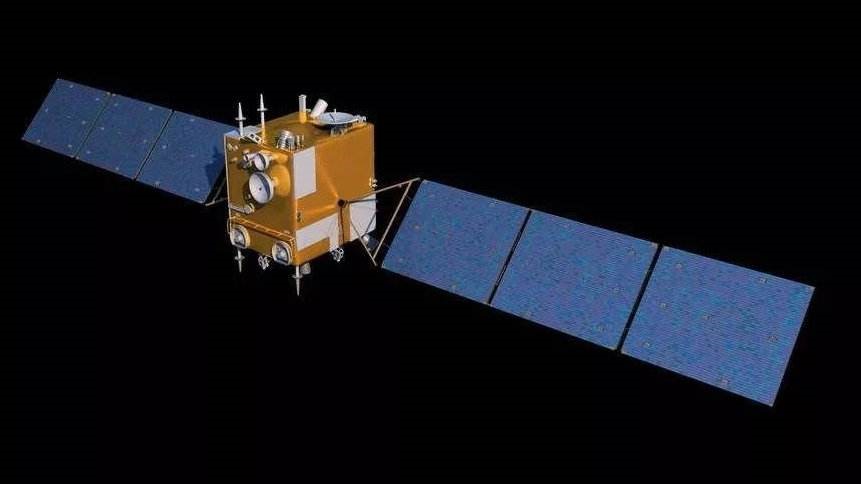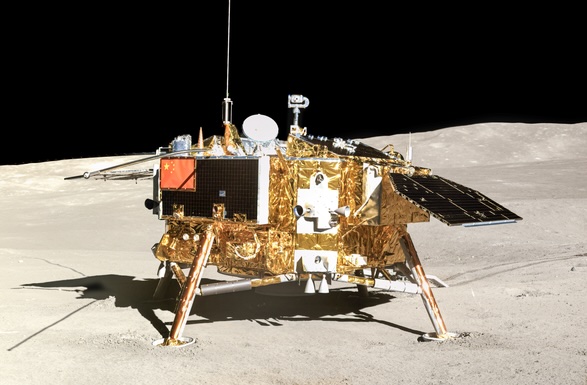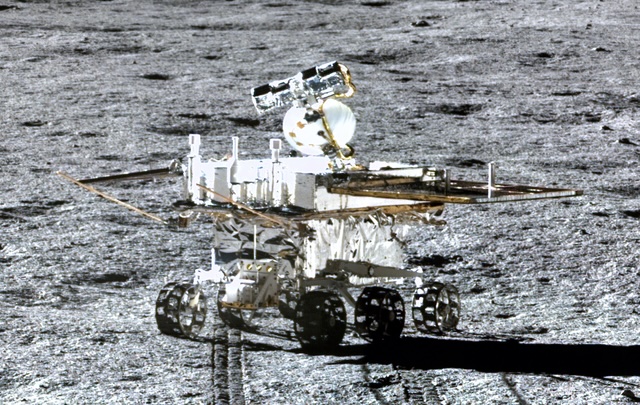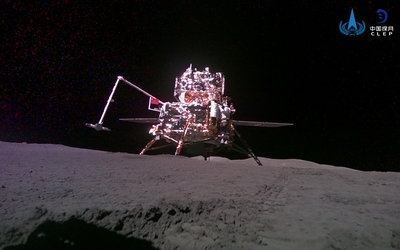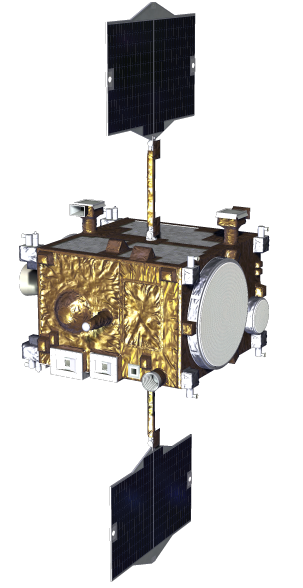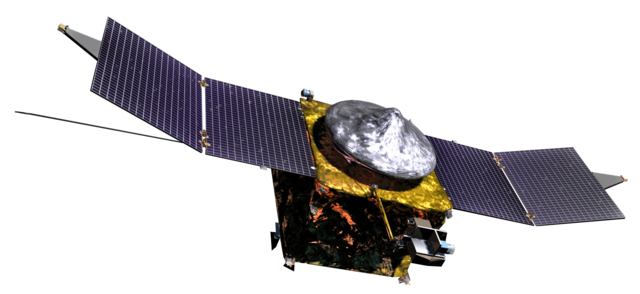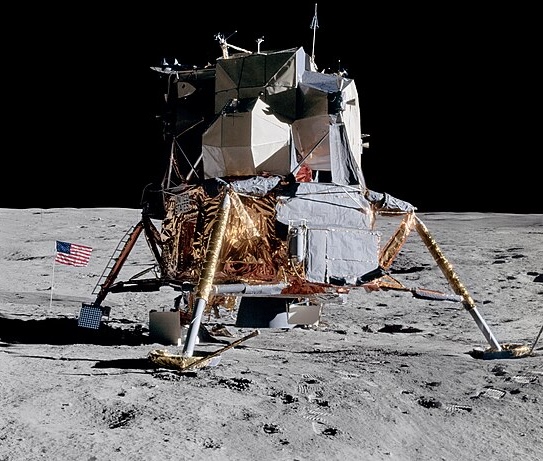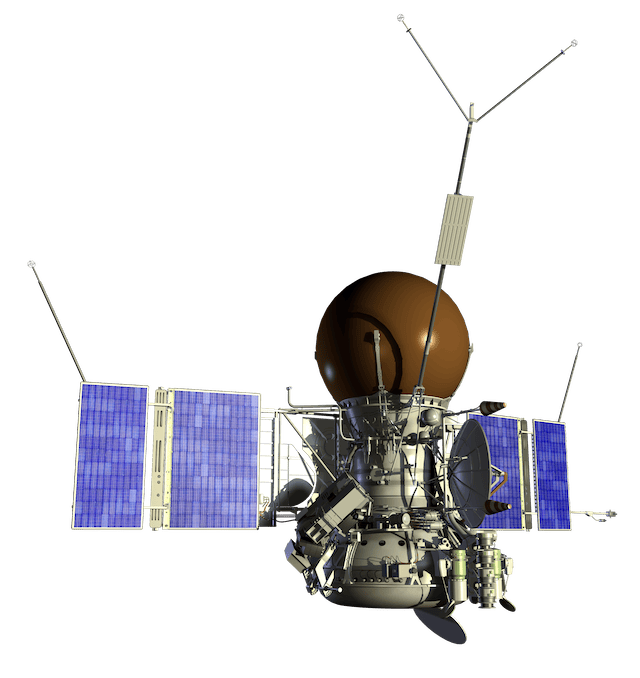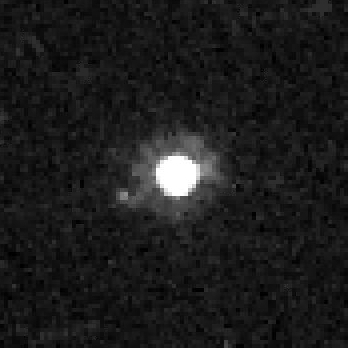1 day / second
0.5 AU
Chang'e 2
Spacecraft
A Chinese lunar probe that mapped the Moon in high resolution before departing to image asteroid 4179 Toutatis, becoming China's first successful deep space explorer.
Key Facts
organization | CNSA |
orbital regime | Inner System |
learn more | Wikipedia |
launched | 2010-10-01 |
defunct | 2014-07-01 |
launch mass | 2,480 kg |
Mission Timeline
Launched
October 1, 2010 at 10:59 UTC
Luna (The Moon)
Orbiter
Chang'e 2 orbited the Moon for 8 months in 2010-2011, capturing high-resolution imagery and mapping the surface before departing for an extended mission to asteroid 4179 Toutatis.
4179 Toutatis
Flyby
Chang'e 2 completed a close flyby of asteroid Toutatis on December 13, 2012, capturing detailed images from just 3.2 kilometers away while traveling at a relative speed of 10.73 kilometers per second.
Defunct
July 1, 2014 at 00:00 UTC
Having completed its mission to study asteroids, photograph Mars and map lunar topography, Chang'e 2 drifted silently beyond Earth's orbit on July 1, 2014, joining other human-made objects in interplanetary space.
Related Spacecraft
Chang'e 1
Launched in 2007
Launched in 2007, Chang'e 1 became the first Chinese lunar orbiter, mapping the Moon's surface and chemical composition during its 16-month mission before being intentionally crashed into the lunar surface in March 2009.
Chang'e 4
Launched in 2018
A robotic spacecraft that achieved the first soft landing on the lunar far side in January 2019, deploying the Yutu-2 rover to explore the South Pole-Aitken basin and conduct pioneering radio astronomy observations from the Moon's surface.
Yutu-2
Launched in 2018
A robotic lunar rover that landed on the far side of the Moon in January 2019 as part of the Chang'e 4 mission, becoming the first spacecraft to make a soft landing on the lunar far side and continuing to operate while exploring the South Pole-Aitken Basin.
Chang'e 5
Launched in 2020
A robotic lunar probe that successfully landed on the Moon in December 2020, collected about 1.7 kilograms of lunar samples from Oceanus Procellarum, and returned them to Earth, marking the first lunar sample return since 1976.
Chang'e 6
Launched in 2024
A planned lunar mission slated for launch in 2024 that will attempt to collect and return samples from the far side of the Moon, marking the first-ever sample return from the lunar far side.
